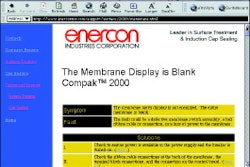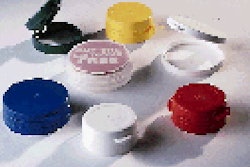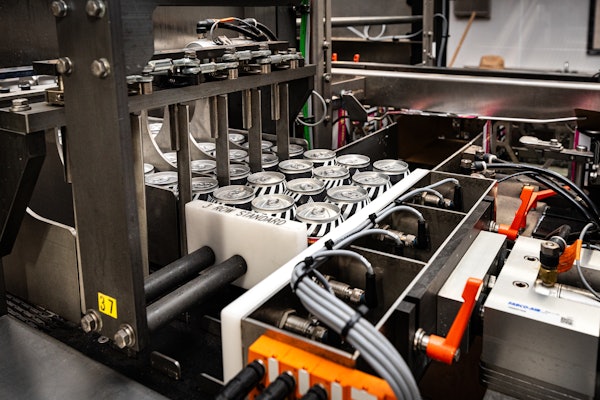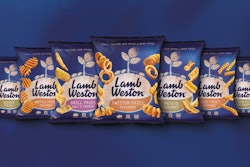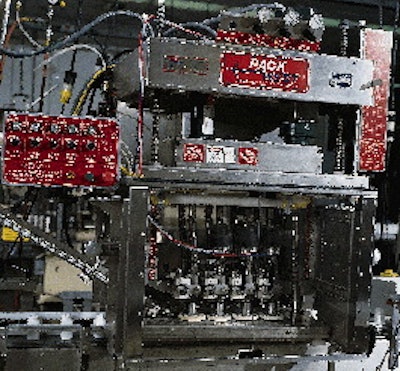
"We were looking to go to a rotary capper because we hadn't found an in-line capper that we really felt confident about for torque and accuracy," says packaging manager Bryan Auxier. Then, an in-line capper from Pack West (Baldwin Park, CA) caught his eye at a packaging trade show. Upon closer inspection, it seemed to be better built than most, says Auxier. "Because the machine was well-built, we felt confident that this machine would do what we wanted," he said. And indeed it has. Running since the line was commissioned last September, the eight-spindle capper has provided smooth service and good torque control. To facilitate cap replenishment, operators dump bulk caps in a waist-high hopper. "Unlike our other cappers, operators don't have to climb a ladder. And they're not lifting the box above shoulder level," observes Auxier. "So the capper represents an ergonomic and safety improvement." A vertical elevator carries caps into a single-feed track, rejecting those that are improperly oriented back into the hopper. Caps are delivered on the track to the first station, which seats the cap, and the first pair of spindles starts the threading. The torquing is performed by three more pairs of spindles that apply progressively stronger torque until the bottles exit the capper. Induction sealing comes next, followed by retorquing, for those packages with child-resistant closures. Non-CR closures aren't retorqued. Each pair of torquing spindles is controlled with individual air clutches. "That's similar to other cappers," admits Auxier, "it's just that the air clutches on this machine are of a much higher grade." Changeover takes about 15 minutes with minimal tools. And torquing accuracy? "When we do our QC sampling, our SPC graph is a straight line," says Auxier. "We get very little fluctuation." In the end, the story of this capper isn't the technology; rather, argues Auxier, it's the engineering. "Other cappers we saw [were similar in concept,] but we felt they lacked a lot in engineering," says Richard Taulli, packaging mechanic supervisor. Auxier adds, "Some thought and some science were put into this machine to make it a better in-line capper."



